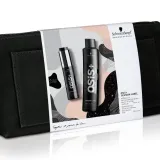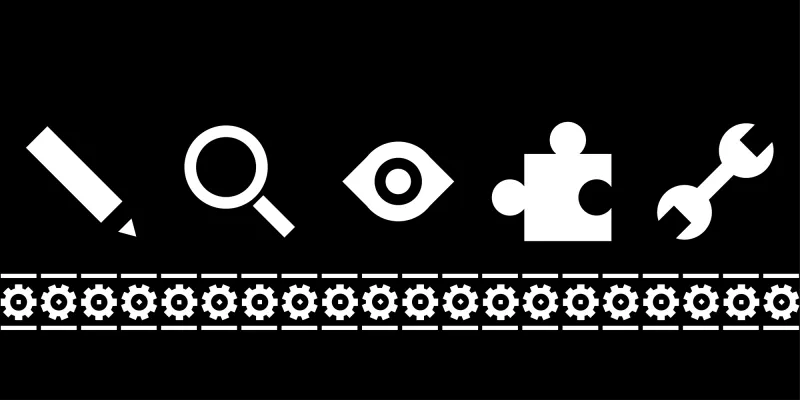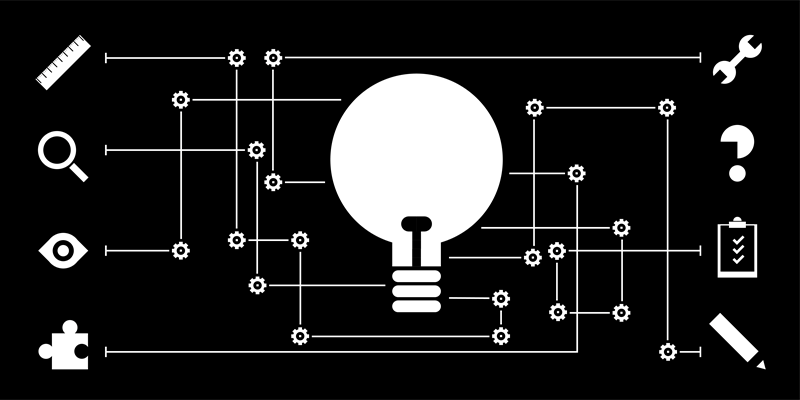


The value of a design process

I have over 10 years’ experience as a graphic designer and I won’t lie, I still have a poopy pants moment every time a new design brief comes my way. Apparently, that’s natural. Not the soiling of pants, but that feeling of trepidation over a new design challenge.
Every designer wants to do their best work. That’s why there is this feeling of anxiety at the start of a new project. I think its ok to have this fear at the beginning, but the key is to not allow that fear get the upper-hand and cloud decisions moving forward. Easier said than done I know.
“If you feel safe in the area you’re working in, you’re not working in the right area.”
David Bowie
THE BEST WAY OF FIGHTING THE UNKNOWN IS KNOWING
So, I have my brief, where do I start? what am I going to do? Focusing on the problem I’m trying to solve is a great way to make progress. There is no genius designer that is able to jump straight into a project and design the right thing every time (well, that’s what I tell myself). Sure, they could come up with something beautiful, but there’s no guarantee they’ll create something useful or meaningful. Creatives have a reputation for delivering vanity, and the difficulty is convincing clients that isn’t what we do. Just coming up with a pretty solution isn’t getting to the core of the challenge. It’s not about thinking about solutions to begin with. It’s about the process that will get me there, and then work forwards, trusting that process to get me to the right design in the end. So, investing a lot of time in defining the problem is what leads to good design.
I’m lucky enough to have worked alongside a lot of great designers over the years and we have a fantastic team here at The Pull Agency. Drawing on all of our experiences and drive to create design solutions that are effective and make a difference, we have developed our own design process. A way to approach the design challenge that we can also lean on to help alleviate that initial worry and trepidation. (phew)
PULL’S WAY
As with most good design processes, ours shares one common theme — as you progress through the phases, inputs are narrowed and solutions are explored and elaborated upon. Of course, design challenges vary, as do budgets. However, from experience working to a process like this prevents those panicked, ‘where do I start moments?’ The process has a solid foundation and can be relevant in nearly all instances of design problem solving, obviously the more you put in the more you get out, but ultimately it helps focus efforts and gives direction.
THE PHASES OF THE PROCESS
1.ENQUIRE
This could be via brand workshops or staff/customer interviews. Talking directly to the audience that a brief is targeting is the best way to understand some of the true issues and unlock even more from the initial design problem. For effective results its vital to go beyond the surface level of what the company does and dive into the benefit for their target audience. Then these findings can be translated in the resulting design solution.
2.RESEARCH
During this phase, I would seek information on competitors, point of differentiation, market, audience, trends, and future prospects. Research should be thorough — both quantitative and qualitative. Research doesn’t solve all the problems, however it does allow me to understand the intricacies of the problem, which will inform the solution. Research allows me to understand the complexity and immediacy of the problem. Having this context allows me to create a tentative plan and will act as a guide in determining which activities and deliverables to pursue. Most importantly, research determines whether or not I’m even solving the right problem
3.LEARN
Next assimilate the findings. Once I have more of an insight into the client’s market and audience behaviour I can make more considered decisions and have a greater understanding of who I’m designing for. When the initial research phase is done right it will help me when presenting my concepts by showing that I made the best and most strategic decisions to reach the client’s goals.
4.PLAN
Define the approach. The combination of the briefing and research will open a path to producing ideas that fit the market, industry trends, and the client’s audience. All the research and learning allows me to focus creativity on the right area. All too often you see people working on multiple solutions but that’s essentially throwing s**t at the wall in the hope it will stick. Doing all the correct preliminary work focusses the creativity.

5.THINK
Time to start getting creative! This is all about taking the insights and facts from the Research phase and applying them into potential creative concepts. The great thing about working through these phases is it helps bring about clarity and focus to the design space. This shouldn’t impede creativity, but give you a more informed starting point. It’s at this stage I would begin to brainstorm ideas. It’s important to remember that each and every element of a design is sending out a message to its intended audience, from colours and typography to the tagline and symbols. Each element should be given considerable thought before making any hard decisions. The brainstorming process should allow for a creative exploration of how these different elements can work together to support the message.
I would normally create mood boards at this stage. This gives me a visual reference of my thoughts and feelings about a creative idea and my intended vision for that concept. It’s great way to convey design ideas and get early sign-off, it also helps others to ‘get inside my head’ (maybe not a good idea!)
6.DESIGN
The exciting bit (now I have a direction) - bringing the concepts to life! You’d think that setting parameters as a result of the earlier phases might stifle creativity, but it actually sets it free! It’s a well-known observation that a designer’s worst brief is a blank piece of paper and the instruction ‘do what you want’! A designer needs a problem to solve, and the benefit of setting a good framework is that it frees your mind to focus on an appropriate solution.
7. IMPLEMENT
Now everything falls into place. Taking the chosen design and rolling it out across all the desired applications, whatever those deliverables maybe.
8. MEASURE
This phase is for after the project is finished. Focussing on results, what impact has the design solution had and how has it performed. As a company we want to know that we have made a positive difference and equally it’s a great opportunity for us to learn and use the findings to inform future projects.
So. I know every designer has their own unique way of solving design problems. However, I found discovering a process, a way of working and thinking that helps to break these barriers and make arriving at a successful and effective solution that much easier is so important. Both for the effectiveness of the design problem I’m solving – and my dry-cleaning bill!
Posted 2 November 2018 by James Smith